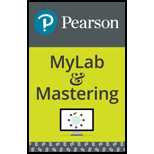
Concept explainers
(a)
Interpretation:
Whether the oxidation of iron to form rust is a physical or a chemical property is to be stated.
Concept introduction:
The change in the physical property of a substance is known as a physical change, which is reversible in nature.
The change in the chemical property of a substance is known as a chemical change, which is irreversible in nature.
(b)
Interpretation:
Whether the sublimation of dry ice is a physical or a chemical property is to be stated.
Concept introduction:
Chemical reactions are the rearrangement of atoms, molecules, or ions to form other chemical substances. Chemical changes are of two types; physical change and chemical change.
The change in the physical property of a substance is known as a physical change, which is reversible in nature.
The change in the chemical property of a substance is known as a chemical change, which is irreversible in nature.
(c)
Interpretation:
Whether the change in color of lithium to gray is a physical or chemical property is to be stated.
Concept introduction:
Chemical reactions are the rearrangement of atoms, molecules, or ions to form other chemical substances. Chemical changes are of two types; physical change and chemical change.
The change in the physical property of a substance is known as a physical change, which is reversible in nature.
The change in the chemical property of a substance is known as a chemical change, which is irreversible in nature.
(d)
Interpretation:
Whether the radioactive decay of plutonium is a physical or chemical property is to be stated.
Concept introduction:
Chemical reactions are the rearrangement of atoms, molecules, or ions to form other chemical substances. Chemical changes are of two types; physical change and chemical change.
The change in the physical property of a substance is known as a physical change, which is reversible in nature.
The change in the chemical property of a substance is known as a chemical change which is irreversible in nature.
Want to see the full answer?
Check out a sample textbook solution
Chapter 3 Solutions
EP INTRODUCTORY CHEM.-MOD.MASTERINGCHEM
- 7. State whether each of the following represents a chemical change or merely a physical change:(a) A few grams of sucrose (table sugar) are placed in a small beaker of deionized water; the sugar crystals “disappear,” and the liquid in the beaker remains clear and colorless.(b) A copper statue, over time, turns green.(c) When a teaspoon of baking soda (sodium bicarbonate) is placed into a few ounces of vinegar (acetic acid), volumes of bubbles (effervescence) are produced.arrow_forwardClassify each of the following as a physical change or a chemical change. (a) Touching a lit candle to hydrogen soap bubbles gives an explosion. (b)Heating water in a flask produces moisture on the glass. (c) Combining two colorless solutions gives a yellow solid. (d) Pouring vinegar on baking soda produces gas bubbles.arrow_forwardClassify each change as physical or chemical. (a) the rusting of iron(b) the evaporation of fingernail-polish remover (acetone) from the skin(c) the burning of coal(d) the fading of a carpet upon repeated exposure to sunlightarrow_forward
- Distilling a red liquid physically separates it into a red solid and a clear, colorless liquid. The red liquid is (A) an element. (B) a compound. (C) a pure substance. (D) a solution.arrow_forwardClassify the following as a physical property or a chemical property. (a) Copper metal has a red-orange metallic luster. (b) Copper metal has a density of 8.94 g/cm3 (c) Copper metal and chlorine gas produce CuCl2arrow_forwardClassify each property as physical or chemical. (a) the tendency for platinum jewelry to scratch easily(b) the ability of sulfuric acid to burn the skin(c) the ability of hydrogen peroxide to bleach hair(d) the density of lead relative to other metalsarrow_forward
- Which of the following is the correct description of theinside of a grapefruit?(a) It is a pure compound.(b) It consists of a homogeneous mixture of compounds.arrow_forwardDetermine whether the following statements describechemical or physical properties: (a) Oxygen gassupports combustion. (b) Fertilizers help to increaseagricultural production. (c) Water boils below 100°C ontop of a mountain. (d) Lead is denser than aluminum.(e) Uranium is a radioactive element.arrow_forwardState whether the following properties of matter arephysical or chemical.(a) An iron nail is attracted to a magnet.(b) A piece of paper spontaneously ignites when itstemperature reaches 451 °F.(c) A bronze statue develops a green coating (patina)over time.(d) A block of wood floats on water.arrow_forward
- Classify each change as physical or chemical. (a) A balloon filled with hydrogen gas explodes upon contactwith a spark.(b) The liquid propane in a barbecue evaporates away becausesomeone left the valve open.(c) The liquid propane in a barbecue ignites upon contactwith a spark.(d) Copper metal turns green on exposure to air andwater.arrow_forwardWhich of the following is best characterized as a heterogeneous mixture? Group of answer choices (a) Air (b) Sandy Dirt (c) An aqueous solution of NaCl (d) Electrum (an alloy of gold and silver) (e) Clear Diamondarrow_forwardDefine physical change and chemical change. State which type of change occurs in each of the following statements: (a) Passing an electric current through molten magnesium chloride yields molten magnesium and gaseous chlorine. (b) The iron in discarded automobiles slowly forms reddish brown, crumbly rust.arrow_forward
- Chemistry: Matter and ChangeChemistryISBN:9780078746376Author:Dinah Zike, Laurel Dingrando, Nicholas Hainen, Cheryl WistromPublisher:Glencoe/McGraw-Hill School Pub Co
